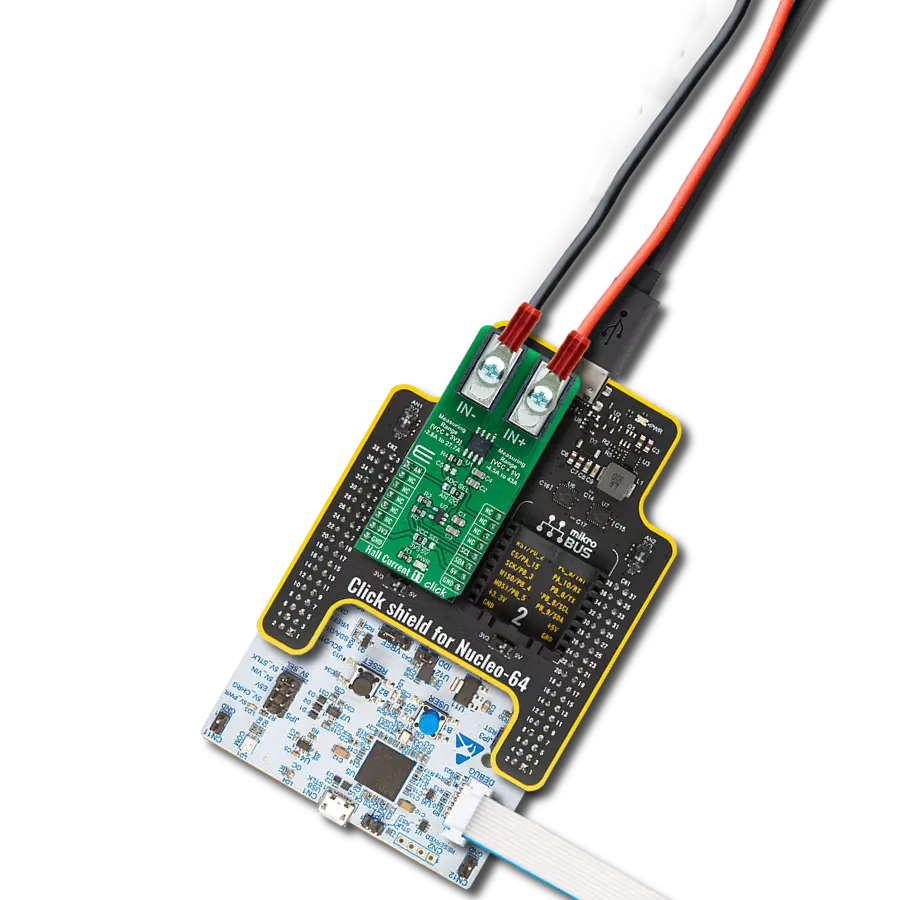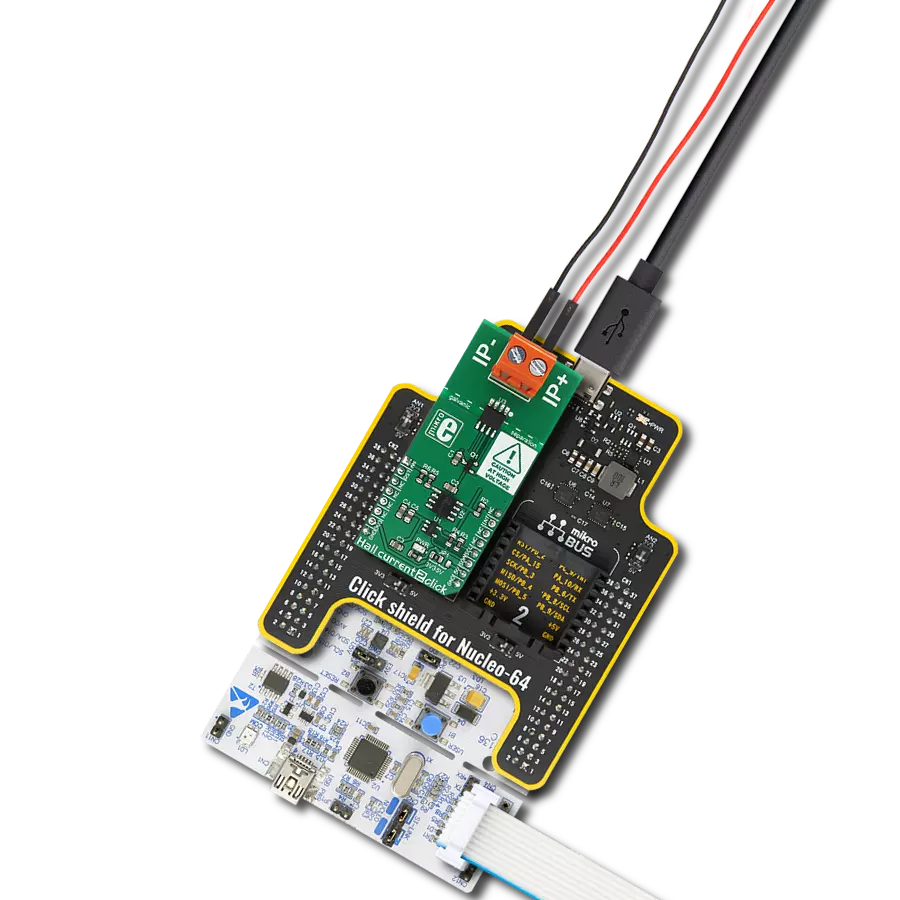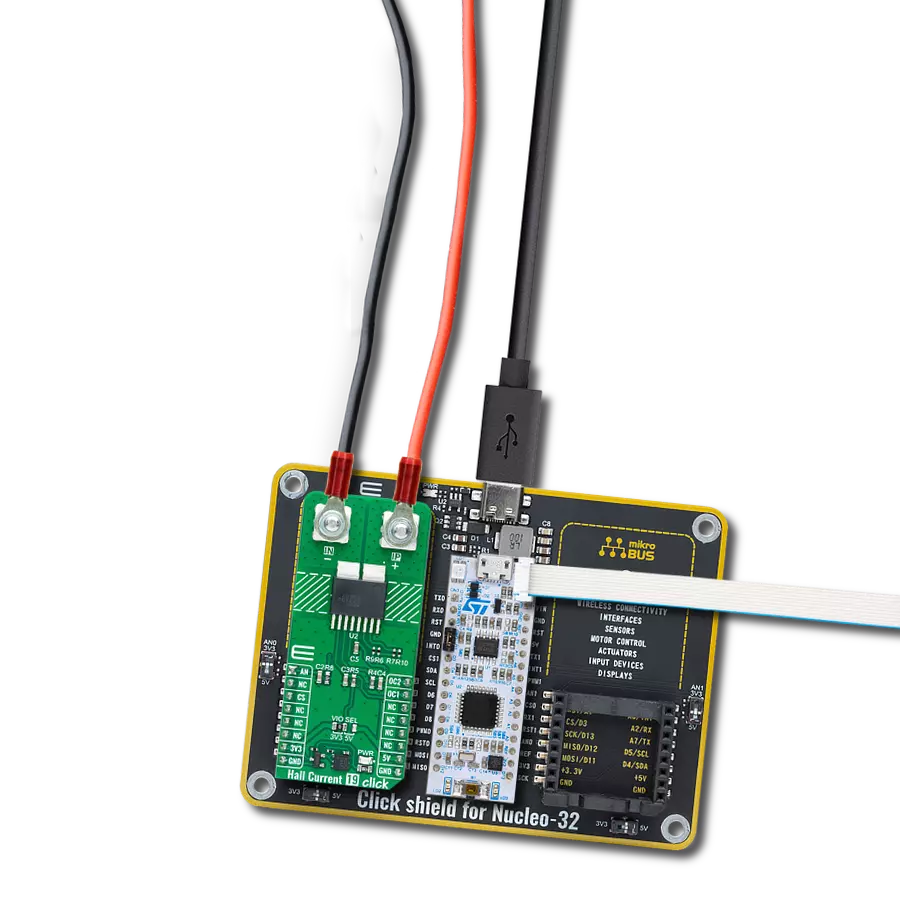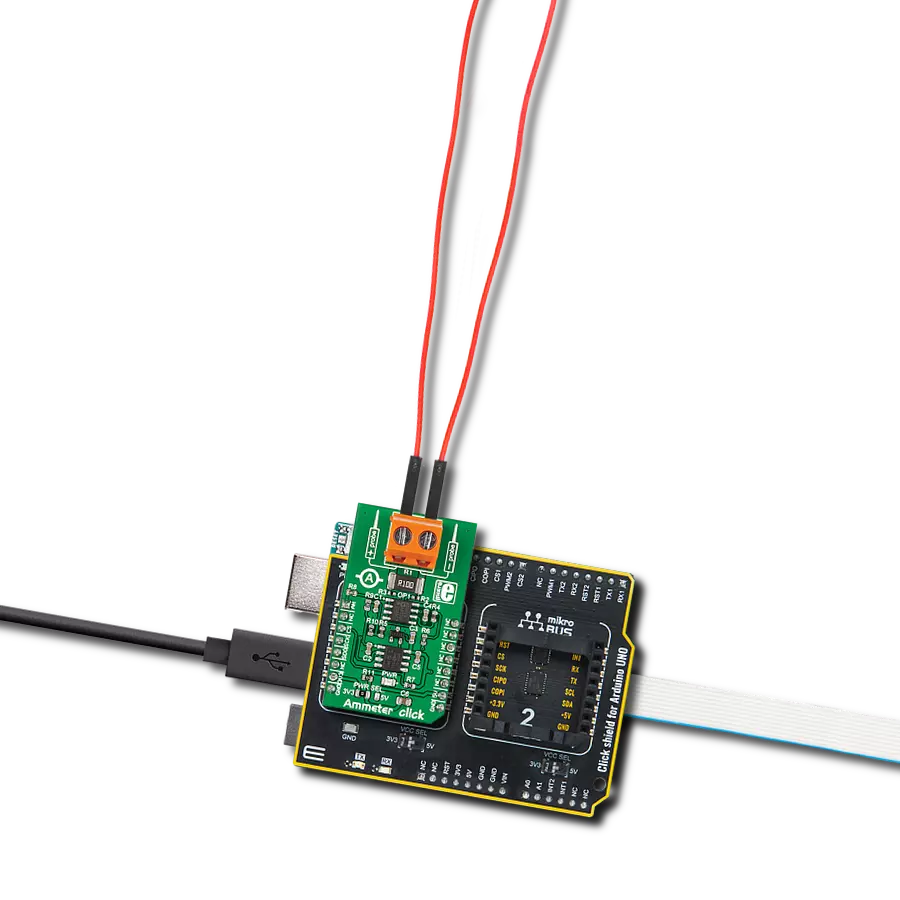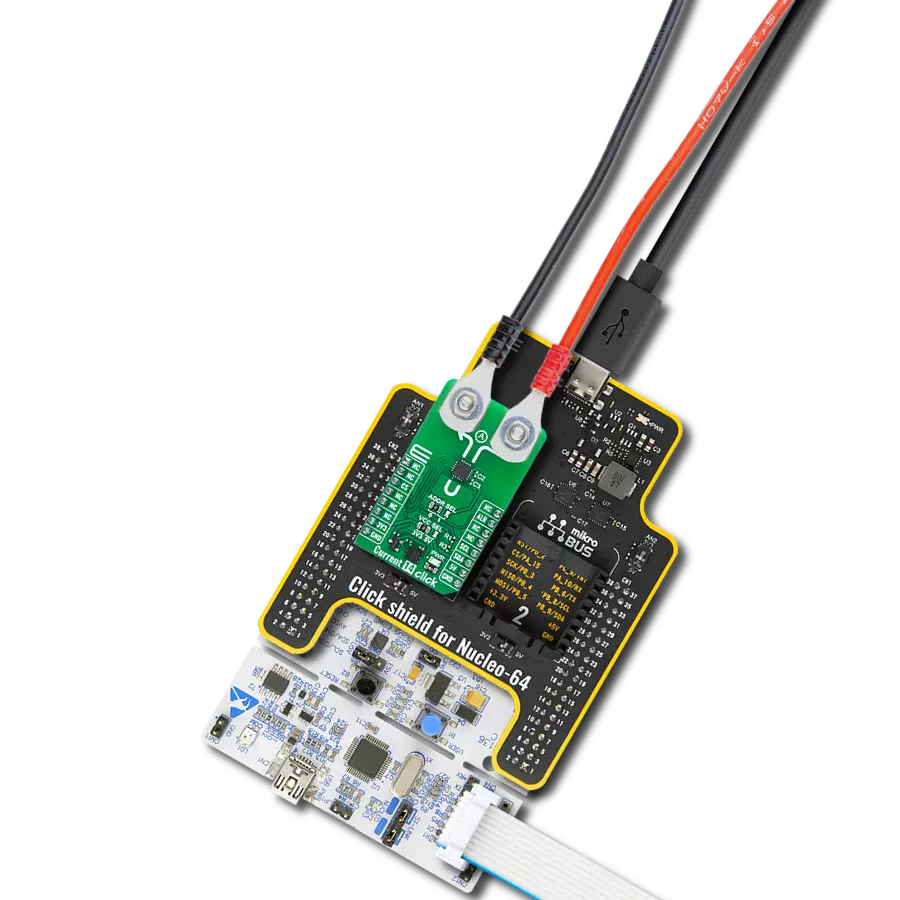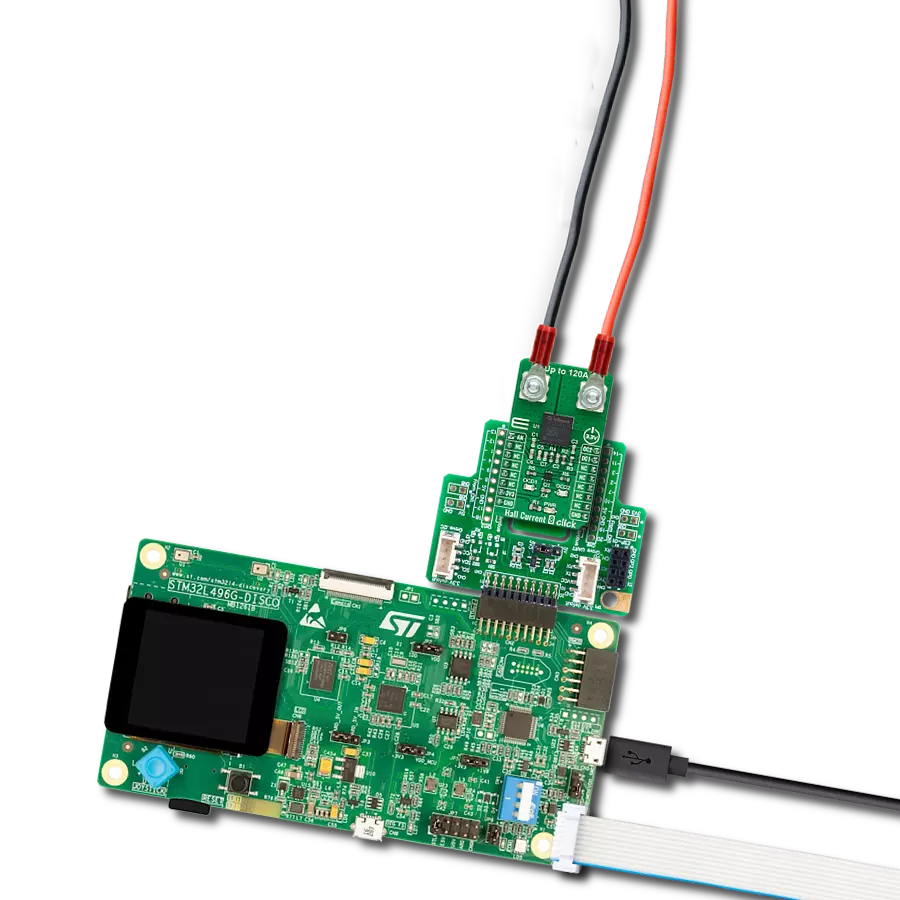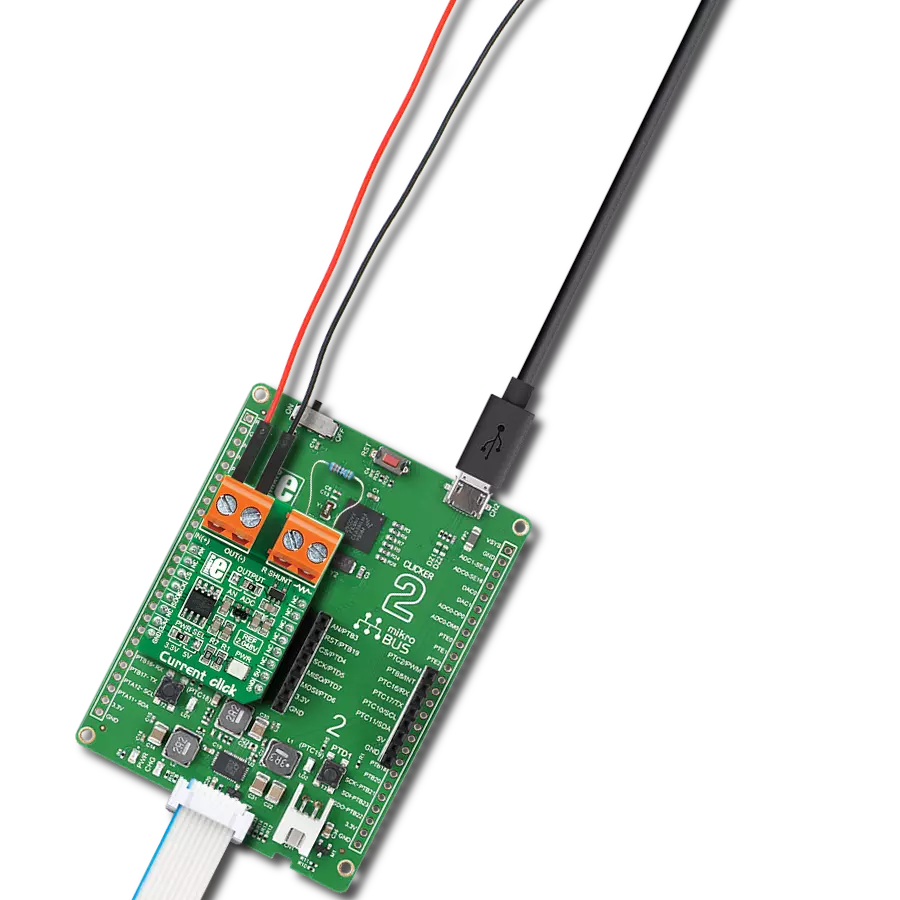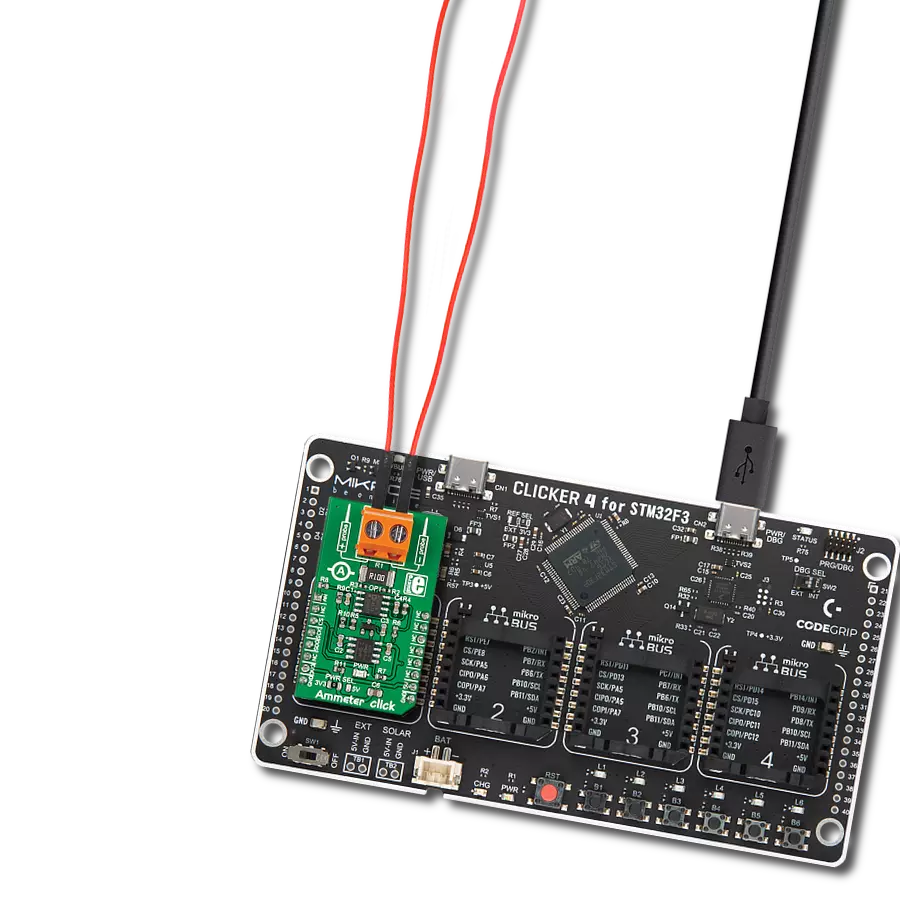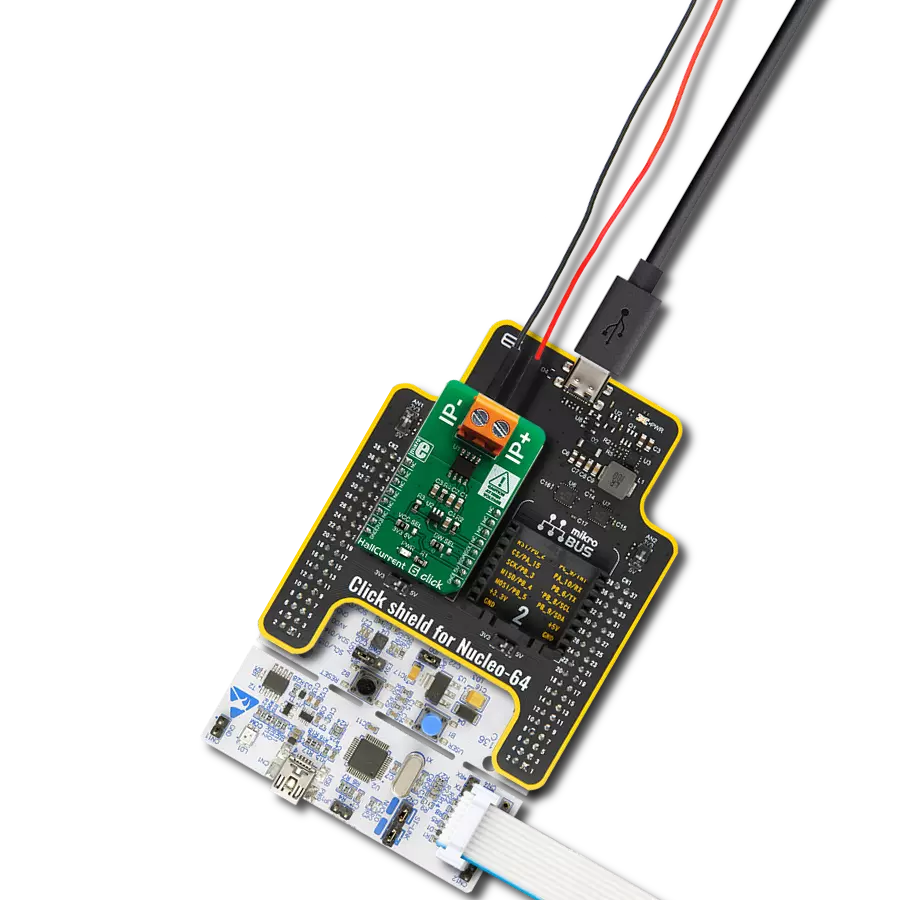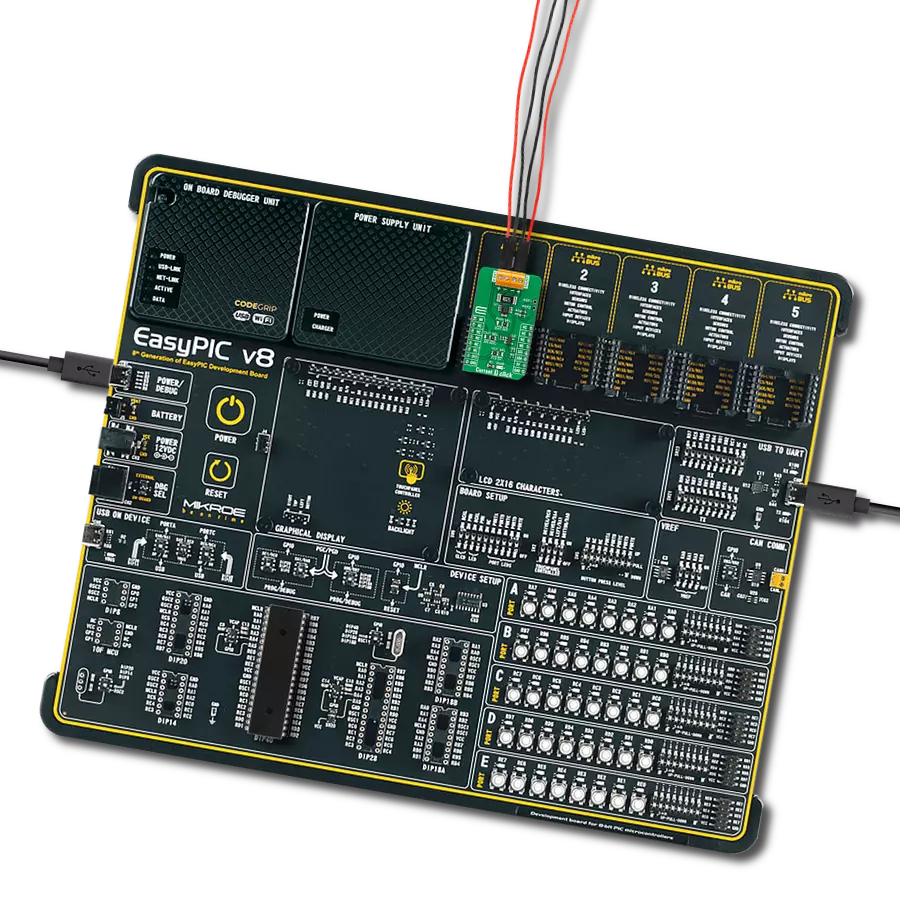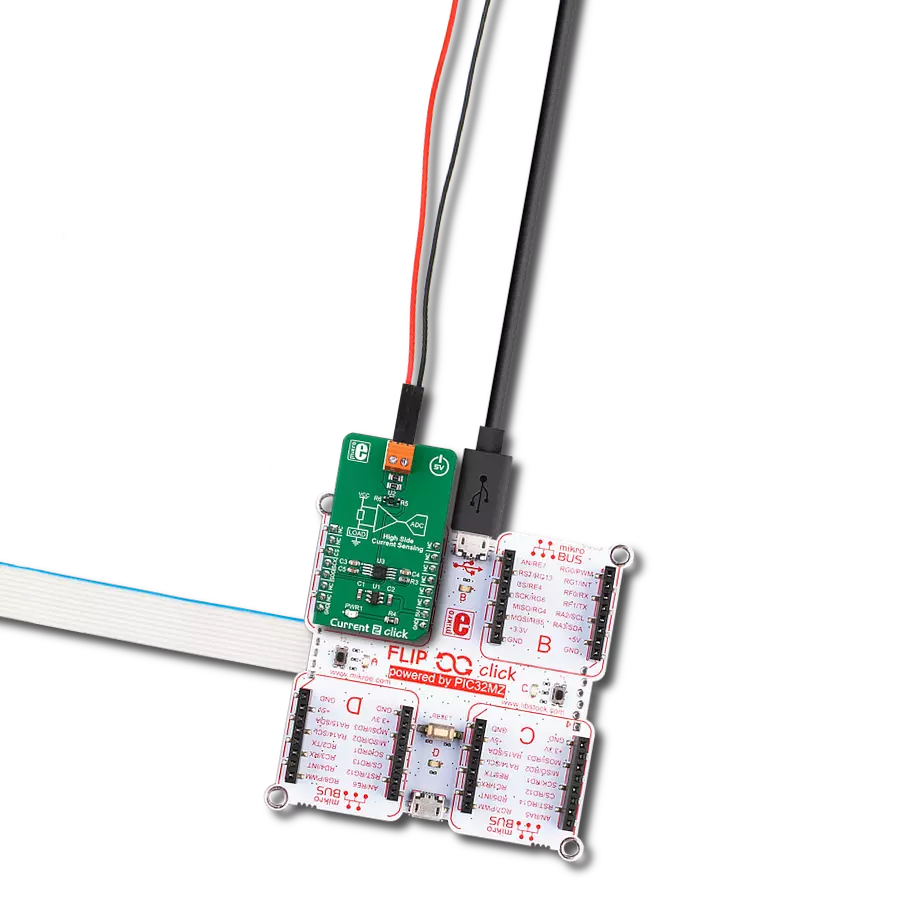Enhance safety protocols and system integrity by leveraging our solution's accurate current measurements to detect irregularities and potential risks
A
A
Hardware Overview
How does it work?
Hall Current 3 Click is based on the MLX91210, a linear Hall current sensor from Melexis. This sensor utilizes the Hall effect phenomenon to measure the current passing through the input pins of the IC. This allows the series resistance to stay very low, in magnitudes of μΩ, reducing dissipation and losses in the main current flow. The main current flow through the input rails of the IC generates a magnetic field, which causes the Hall effect on two integrated Hall plates. These two plates are connected differentially, preventing foreign magnetic interferences from influencing the measurement. A front-end section conditions and amplifies the signal, canceling out interferences. The conditioned signal is then available at the VOUT pin of the MLX91210, with a linear dependency on the input current. It is further routed to an A/D converter. The VOUT voltage is stable and has a low sensitivity drift over temperature (±1.5 % with nominal current). The VOUT pin of the
MLX91210 stays at 50% of VDD (5V) at 0A of current. This allows you to measure both polarities: positive current polarity will pull the VOUT above half of the VDD, while negative current polarity will draw the VOUT pin below the VDD voltage. The MLX91210 also features fault reporting if overvoltage, undervoltage, or calibration data CRC error occurs. It will set the VOUT pin to a high impedance mode (Hi-Z). The datasheet offers an explanation about Hi-Z timings for each type of error. The resolution of the MLX91210 IC can be determined from the full IC label: MLX91210KDF-CAS-101-SP, where CAS-101 means that it has the analog voltage resolution of 80mV/A or ±25A for the full scale (FS) measurement. The output voltage is also routed to the MCP3221, a 12 Bit SAR type ADC with the I2C interface, from Microchip. This ADC is used in several different Click board™ designs, as it yields accurate conversions, requires a low count of external components, and has a
reasonably good signal-to-noise ratio (SNR). It can achieve up to 22.3ksps, which allows good measurement resolution for most purposes. After the VOUT measurement voltage has been converted to a digital value, it can be read via the I2C bus of the MCP3221 ADC. Since the ADC IC works only with 3.3V communication voltage levels, the Click board™ is equipped with the PCA9306, a bi-directional I2C level translator. This IC accepts two voltage levels: one for the input signal and another for the output signal. The VCC SEL jumper can select the output reference signal, allowing communication with both 3.3V and 5V MCUs. The I2C bus already includes pull-up resistors, so no further configuration is needed; it can be used immediately. The input terminal has a cross-section of 2.5mm so that it can accept a high input current of more than 10A. It has two input poles: IP+ and IP-. Conductors with the current that needs to be measured can be connected to this terminal.

Features overview
Development board
Nucleo-64 with STM32L073RZ MCU offers a cost-effective and adaptable platform for developers to explore new ideas and prototype their designs. This board harnesses the versatility of the STM32 microcontroller, enabling users to select the optimal balance of performance and power consumption for their projects. It accommodates the STM32 microcontroller in the LQFP64 package and includes essential components such as a user LED, which doubles as an ARDUINO® signal, alongside user and reset push-buttons, and a 32.768kHz crystal oscillator for precise timing operations. Designed with expansion and flexibility in mind, the Nucleo-64 board features an ARDUINO® Uno V3 expansion connector and ST morpho extension pin
headers, granting complete access to the STM32's I/Os for comprehensive project integration. Power supply options are adaptable, supporting ST-LINK USB VBUS or external power sources, ensuring adaptability in various development environments. The board also has an on-board ST-LINK debugger/programmer with USB re-enumeration capability, simplifying the programming and debugging process. Moreover, the board is designed to simplify advanced development with its external SMPS for efficient Vcore logic supply, support for USB Device full speed or USB SNK/UFP full speed, and built-in cryptographic features, enhancing both the power efficiency and security of projects. Additional connectivity is
provided through dedicated connectors for external SMPS experimentation, a USB connector for the ST-LINK, and a MIPI® debug connector, expanding the possibilities for hardware interfacing and experimentation. Developers will find extensive support through comprehensive free software libraries and examples, courtesy of the STM32Cube MCU Package. This, combined with compatibility with a wide array of Integrated Development Environments (IDEs), including IAR Embedded Workbench®, MDK-ARM, and STM32CubeIDE, ensures a smooth and efficient development experience, allowing users to fully leverage the capabilities of the Nucleo-64 board in their projects.
Microcontroller Overview
MCU Card / MCU
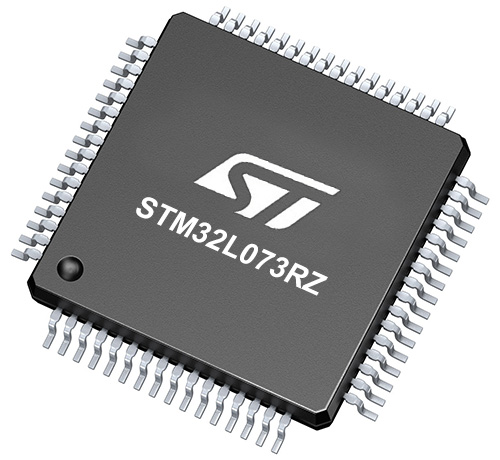
Architecture
ARM Cortex-M0
MCU Memory (KB)
192
Silicon Vendor
STMicroelectronics
Pin count
64
RAM (Bytes)
20480
You complete me!
Accessories
Click Shield for Nucleo-64 comes equipped with two proprietary mikroBUS™ sockets, allowing all the Click board™ devices to be interfaced with the STM32 Nucleo-64 board with no effort. This way, Mikroe allows its users to add any functionality from our ever-growing range of Click boards™, such as WiFi, GSM, GPS, Bluetooth, ZigBee, environmental sensors, LEDs, speech recognition, motor control, movement sensors, and many more. More than 1537 Click boards™, which can be stacked and integrated, are at your disposal. The STM32 Nucleo-64 boards are based on the microcontrollers in 64-pin packages, a 32-bit MCU with an ARM Cortex M4 processor operating at 84MHz, 512Kb Flash, and 96KB SRAM, divided into two regions where the top section represents the ST-Link/V2 debugger and programmer while the bottom section of the board is an actual development board. These boards are controlled and powered conveniently through a USB connection to program and efficiently debug the Nucleo-64 board out of the box, with an additional USB cable connected to the USB mini port on the board. Most of the STM32 microcontroller pins are brought to the IO pins on the left and right edge of the board, which are then connected to two existing mikroBUS™ sockets. This Click Shield also has several switches that perform functions such as selecting the logic levels of analog signals on mikroBUS™ sockets and selecting logic voltage levels of the mikroBUS™ sockets themselves. Besides, the user is offered the possibility of using any Click board™ with the help of existing bidirectional level-shifting voltage translators, regardless of whether the Click board™ operates at a 3.3V or 5V logic voltage level. Once you connect the STM32 Nucleo-64 board with our Click Shield for Nucleo-64, you can access hundreds of Click boards™, working with 3.3V or 5V logic voltage levels.
Used MCU Pins
mikroBUS™ mapper
Take a closer look
Click board™ Schematic

Step by step
Project assembly
Software Support
Library Description
This library contains API for Hall Current 3 Click driver.
Key functions:
hallcurrent3_getCurrent- This function calculates the current valuehallcurrent3_read_data- This function read two bytes of data from the specified register
Open Source
Code example
The complete application code and a ready-to-use project are available through the NECTO Studio Package Manager for direct installation in the NECTO Studio. The application code can also be found on the MIKROE GitHub account.
/*!
* \file
* \brief HallCurrent3 Click example
*
* # Description
* The example starts off with the logger and Click modules and then starts measuring and
* displaying current values.
*
* The demo application is composed of two sections :
*
* ## Application Init
* Initializes and configures the logger and Click modules.
*
* ## Application Task
* Reads and displays current values every second.
*
* \author MikroE Team
*
*/
// ------------------------------------------------------------------- INCLUDES
#include "board.h"
#include "log.h"
#include "hallcurrent3.h"
// ------------------------------------------------------------------ VARIABLES
static hallcurrent3_t hallcurrent3;
static log_t logger;
// ------------------------------------------------------ APPLICATION FUNCTIONS
void application_init ( )
{
log_cfg_t log_cfg;
hallcurrent3_cfg_t cfg;
/**
* Logger initialization.
* Default baud rate: 115200
* Default log level: LOG_LEVEL_DEBUG
* @note If USB_UART_RX and USB_UART_TX
* are defined as HAL_PIN_NC, you will
* need to define them manually for log to work.
* See @b LOG_MAP_USB_UART macro definition for detailed explanation.
*/
LOG_MAP_USB_UART( log_cfg );
log_init( &logger, &log_cfg );
log_info( &logger, "---- Application Init ----" );
// Click initialization.
hallcurrent3_cfg_setup( &cfg );
HALLCURRENT3_MAP_MIKROBUS( cfg, MIKROBUS_1 );
hallcurrent3_init( &hallcurrent3, &cfg );
}
void application_task ( )
{
float current_data;
current_data = hallcurrent3_get_current( &hallcurrent3 );
log_printf( &logger, "Current : %f mA\r\n", current_data );
Delay_ms ( 1000 );
}
int main ( void )
{
/* Do not remove this line or clock might not be set correctly. */
#ifdef PREINIT_SUPPORTED
preinit();
#endif
application_init( );
for ( ; ; )
{
application_task( );
}
return 0;
}
// ------------------------------------------------------------------------ END
Additional Support
Resources
Category:Current sensor



















